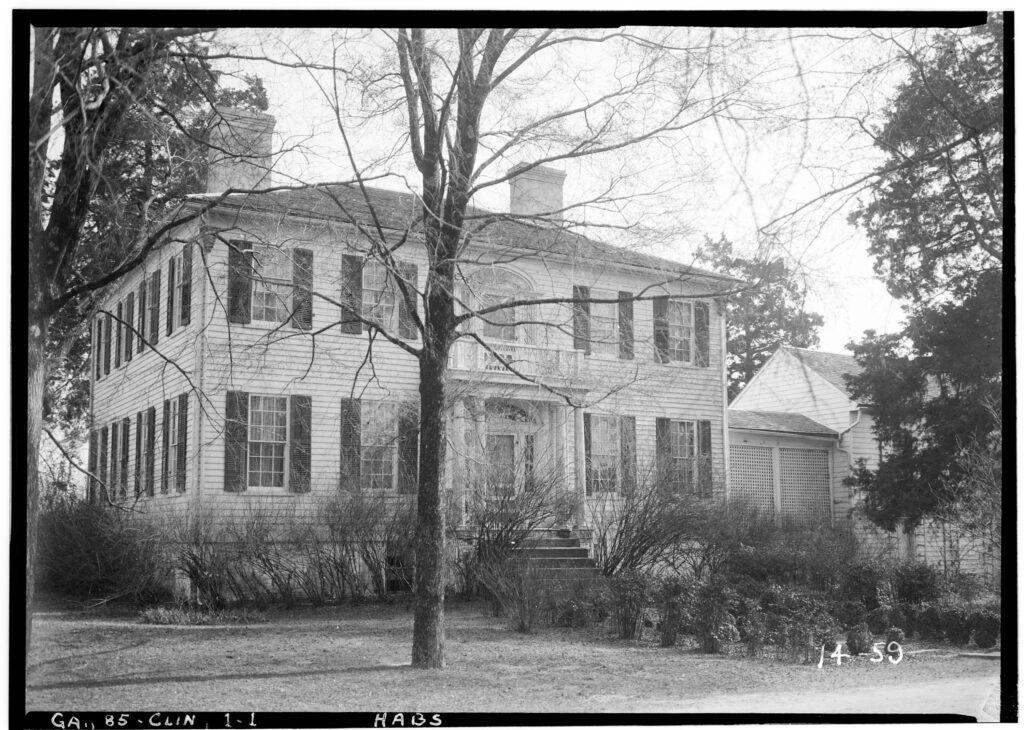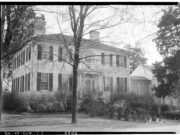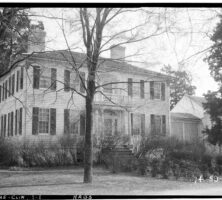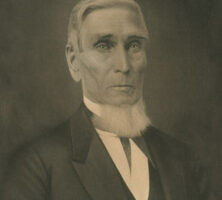Daniel Pratt was an industrialist who built Neoclassical-style houses in Milledgeville in the 1820s and then moved to Alabama, where he manufactured cotton gins and founded the town he named Prattville.
Pratt was born in 1799 in Temple, New Hampshire, to a poor family that provided him with an intermittent grade-school education. At the age of sixteen he was apprenticed to Aaron Kimball Putnam, a carpenter from the neighboring town of Wilton. In 1819 he sailed from Boston, Massachusetts, to Savannah, where he believed he would find greater opportunities. He remained in Savannah for nearly two years before moving to Georgia’s new capital, Milledgeville.
Milledgeville was also the center of a growing economy based on cotton and the plantation system. In his ten years in Milledgeville, from 1821 to 1831, Pratt is credited with several large Neoclassical-style houses, often drawn from Asher Benjamin’s popular The American Builder’s Companion, first published in 1806. His houses were often two-story, Georgian-plan dwellings with a two-story classical entrance portico and an elaborately carved door surround. His interiors included plaster moldings, wood pilasters and wainscoting, carved mantels, and a graceful spiral stair on an axis with the main entrance. Mount Nebo (1823), attributed to Pratt, was a Palladian design with a two-story entrance porch similar to early designs for Thomas Jefferson’s Monticello in Virginia. Probably inspired by Robert Morris’s Select Architecture (1755), Mount Nebo is among the few such designs built in Georgia. Westover (1822), Lowther Hall (1822-23), and Blount House (1828-33) were among Pratt’s best designs.

In 1831 Pratt quit the building trade and moved to Jones County to manufacture cotton gins with his partner, Samuel Griswold. Two years later, he and his wife and two enslaved people settled in Autauga County, Alabama, where he built a blacksmith shop for the production of gins. In 1838 Pratt purchased a large tract of land in Autauga County, where he founded the town of Prattville. There he built a sawmill, gristmill, foundry, carriage factory, tin shop, woolen mill, cotton mill, and gin factory, which manufactured an improved model of Eli Whitney’s cotton gin. (Griswold would later model Griswoldville after Prattville.) In 1842 Pratt built his private mansion, to which he added a gallery in 1845 to showcase the work of his friend George Cooke, one of the South’s best-known painters. By 1860 Pratt had built two schools, four churches, a library, a town hall, and many houses for the town’s residents. Pratt was elected to the state legislature in 1860 and was instrumental in establishing the iron and steel industry in Alabama after the Civil War (1861–65). He remained active in politics and industry until his death in Prattville in 1873.








